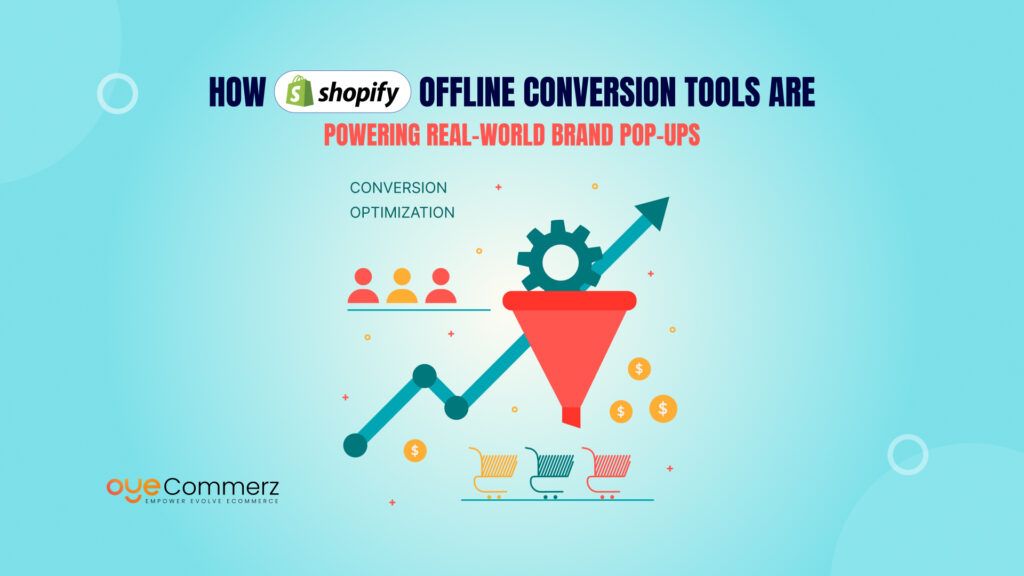Have you ever wondered if Magento is a better fit for your business than Shopify? With over 4.5 million e-commerce stores running on these platforms, choosing the right one can significantly impact your growth and revenue.
As an existing Shopify business owner, you already know the power of a user-friendly and scalable platform. But what if your business needs more customization, advanced features, or even a different approach to app development? That’s where the Shopify vs Magento debate comes in.
In this blog, we’ll break down the key differences between these two platforms—covering everything from ease of use to pricing, customization, and performance—so you can decide which one is the best fit for your business in 2025 and beyond. Let’s dive in
Table of Contents
ToggleWhat is Shopify?
Shopify is a comprehensive commerce platform that enables businesses to sell online, offline, and across a variety of channels. The company is trusted by millions of businesses around the globe, and it gives merchants the power to design and manage online stores, sell through various devices such as web, mobile, tablets, and even brick-and-mortar or pop-up shops. A central hub enables businesses to sell products smoothly across a variety of channels, including social media and online marketplaces.
Beyond its eCommerce functionality, Shopify takes care of hosting, servers, security, and the technical infrastructure needed to run a store. This means that businesses do not have to handle these aspects themselves, which allows them to focus on growth and operations. At its core, Shopify helps merchants create stunning online stores using customizable website templates. It also provides a robust backend for managing inventory, processing payments, and handling orders.
Shopify’s checkout is considered the best in the world. It features faster payment and accepts all payment methods in the industry. It maximizes conversions through all this. Additionally, Shopify also has integrated marketing tools. It has built-in SEO, social media, and content generation features. Hence, Shopify is one of the strongest platforms for business at scale.
What is Magento?
Magento was founded by Varien in 2008 and differs from its competitor Shopify in being open source. That means there is full access to its back end, allowing more flex and control over it; on the other hand, Shopify offers a completely hosted and closed environment. Trusted and supported by the brands including Omega and Dior, Magento has now become the most widely used eCommerce application in the market. However, the launch of the latest version of Magento received backlash due to the bugs and technical problems with the technicalities involved and problems experienced by the merchants upgrading it.
Magento was developed with the help of PHP, integrating extra frameworks like Laminas and Symfony. Magento requires its users to prepare the management systems for databases using either MySQL or MariaDB management systems. Packed to the brim with tailored eCommerce features for businesses are the following features: content management systems on the backend, cart check-out functionality, various ways of paying using the online gateway, managing orders and stock, etc.
Shopify vs Magento: What's the difference?
Now comes the exciting part comparing Shopify and Magento side by side. After outlining what each platform offers, we’ll dive deeper into the key factors businesses should consider when choosing between them.
This comparison will include critical aspects such as hosting, features, pricing, security, ease of use, support, shipping, logistics, inventory management, customization options, plugins and apps, international capabilities, and content management systems (CMS). We will also weigh the pros and cons of each platform to guide you in making an informed decision based on your business needs.
Shopify vs Magento: Features
Shopify and Magento are specifically designed for eCommerce brands and provide all the features that a DTC business requires. However, Shopify is more user-friendly when used on a daily basis, with an appealing interface. Both the platforms have key functionalities like product listing (collection) pages, product pages, editorial/content pages, blogging, shopping carts, checkout systems, and store search capabilities.
Magento has generally provided more native functionality throughout its history, such as product bundling and native child product groups within collections. Shopify, in general, relies on the breadth of its third-party app ecosystem to get most of its extended features. However, in more recent years, Shopify has really closed this gap significantly by natively providing all of these features, effectively making the two much closer in terms of native functionalities.
Shopify really shines in terms of marketing features, with its powerful integrations with tech partners such as Klaviyo, Yotpo, SKIO, and MailChimp, allowing businesses to easily implement email marketing, cart recovery, loyalty programs, subscriptions, and reviews. Shopify also offers seamless native connections with advertising platforms such as Meta, TikTok, and Pinterest, enabling efficient data sharing and sales growth.
Magento’s marketing capabilities are typically dependent on its extension marketplace. For email marketing, for instance, businesses would need to install third-party extensions or work with developers to build integrations with the desired platforms. While some advertising platforms, such as Meta and Google, have developed native extensions for Magento, others, such as TikTok, may require custom development or reliance on third-party solutions often incurring additional costs.
Shopify vs Magento: Payment Gateways
Any eCommerce store must have multiple payment gateways so that they can accept payments from their customers. They act as an intermediary for the customer, business, and financial institutions in eCommerce.
Shopify supports more than 100 payment gateways, enabling merchants to offer their customers trusted and familiar payment methods. Shopify also provides its own gateway, Shopify Payments, which accepts major debit and credit cards, as well as accelerated payments like Apple Pay and Google Pay, without the need for a third-party service. For those who prefer third-party options, Shopify provides seamless one-click integrations with popular gateways like PayPal, Amazon Pay, and Klarna. Powered by Stripe, Shopify Payments is widely used globally, accommodating region-specific payment preferences. However, Shopify has its checkout to only approved gateways which might be a limiting factor to the niche industries; that is, CBD sales.
Magento (Adobe Commerce) natively supports the checkout with PayPal and Braintree. However, they do not have their own payment gateway. To add others, merchants need developers to work out the custom integrations that can be more complex compared to Shopify’s simple setup.
While Shopify simplifies third-party integration, it imposes a surcharge for non-Shopify Payments gateways. Sticking with Shopify Payments eliminates these fees, making it a cost-effective choice for many businesses. Magento offers greater flexibility, but with added complexity.
Shopify vs Magento: Web Development and Coding
The development requirements and coding languages of Shopify and Magento are critical factors when considering how to build, optimize, and scale your eCommerce store. These platforms are built on entirely different languages: Magento uses PHP, a well-established programming language, while Shopify relies on its proprietary Liquid template language, which combines CSS and HTML to design stores.
PHP has been one of the main web development languages for many years. However, its popularity has faded out with the rise of modern frameworks. On the other hand, Liquid is a language developed by Shopify in collaboration with Ruby, is an open-source language meant for building Shopify themes and managing store content. In both cases, PHP and Liquid are secure, trusted, and well-suited for building eCommerce stores.
Shopify’s ecosystem is relatively easier to navigate for developers, as Liquid is quick to learn and the platform has attracted a large community of partners and experts. Shopify also supports headless architecture, offering businesses flexibility to bypass some of its backend limitations and create custom, unique experiences. In contrast, Magento’s reliance on PHP demands advanced server knowledge and professional development teams, making it more suitable for businesses with significant technical resources.
Whereas it is possible to set up Shopify stores with minimal knowledge of coding, a proper development team is necessary as a business grows to ensure the store stays optimized and unique. In contrast, Magento requires high technical knowledge from the outset, especially when creating a store from scratch or for advanced customizations.
In the eCommerce market, it is harder than ever to stand out in the crowd. No matter the platform, relying solely on pre-built templates may not be enough. Whether you go with Shopify or Magento, hiring expert developers can help create a unique online experience that will be tailored to your brand and audience.
Shopify vs Magento: Usability
Both Shopify and Magento have developed interfaces tailored to the merchants using them. The decision usually depends on individual preference, but most merchants find Shopify’s interface to be more appealing due to its modern, clean, and intuitive design. Shopify is known for having an extremely user-friendly experience that allows for smooth tools for merchants and highly performing, aesthetically pleasing storefronts for customers.
Shopify is easy to use. The most basic elements like orders, products, and collections are easy to manage. Shopify also promotes third-party developers to make apps using its Polaris UI toolkit, so the apps are integrated with Shopify’s intuitive interface. Another major plus of Shopify is Online Store 2.0 CMS, which is aesthetically pleasing and user-friendly, with a drag-and-drop editor that simplifies website design and management.
On the other hand, Magento is tougher to learn compared to Shopify and has a long time before its users would feel comfortable enough using it. Its interface seems to be more complicated; only some technical or development knowledge may be required in order to fully use its functions. However, Magento gives higher backend customizability in the box; therefore, businesses can implement their required functionalities. This flexibility comes with a trade-off, wherein teams may need extra resources and training to manage the platform effectively.
In the best case, both platforms are optimized for ease of use with the right development support. However, Shopify’s simple and polished UI makes it a preferred choice for business users looking for a more streamlined and visually appealing experience in managing their eCommerce platforms.
Shopify vs Magento: Pricing
Shopify supports numerous pricing plans tailored to match the scale and complexity of businesses. Its entry points start as very low with its basic plan; in such a plan, it keeps scaling with additional users and advanced analytics for more than one store. Shopify offers Shopify Plus, which makes it a lot more applicable for big brands, in addition to features like enabling checkout process customization.
Magento also offers several tiers of pricing, starting with Magento Open Source, which is free. However, for more sophisticated options, like Magento Commerce and Magento Commerce Cloud, it is very expensive.
Generally, more advanced plans have additional features, and the proper plan depends on the individual needs of each business. One of Shopify’s main advantages is that it uses Shopify Fulfillment Pricing which includes hosting, security, patching, and updates in the service, whereas with Magento, you have to deal with hosting and servers on your own. Moreover, Magento platform upgrades usually involve developers, while Shopify performs most updates automatically at no additional cost.
However, there is a need to account for Shopify’s transaction fees or additional charges for using third-party payment gateways, as these costs can add up compared to platforms like Magento, which do not have similar third-party service fees.
Shopify vs Magento: Security
Both Shopify and Magento are pretty secure platforms if installed correctly and come with robust security measures that protect businesses.
Shopify takes care of all security aspects, from hosting your store to managing server security. Additionally, it provides fraud protection tools to flag potentially fraudulent orders. Further, Shopify uses secure socket layer (SSL) encryption to protect customer data during any visit to the store. Its dedicated 24/7 security team works round-the-clock to ensure the safety of your business in online spaces.
Magento, while built to be secure, puts more responsibility on the merchant. You are in charge of managing the server setup and SSL certificates. Though Magento offers several hosting providers, securing your store will involve additional steps and will usually require professional consultation for full protection.
Shopify vs Magento: Customization
Customization is one of the critical differentiating factors when it comes to a competitive eCommerce market and providing a unique experience to your customers. Customization can start from the visual design of your store to specific features that you may offer to help create a branded experience meant to improve key eCommerce metrics like conversion rates, average order value, and customer engagement. Let us look at how each platform supports customization:
Shopify offers major customizability, especially with respect to store design. It’s possible to design an entirely custom theme, customised to fit the image of your brand, or one can choose from the increasingly extensive library of Shopify themes available, which come in an assortment of styles and free options. After selecting a theme, Shopify’s drag-and-drop CMS and user-friendly Theme Editor make it easy to add and manage content. However, the flipside is that Shopify’s core features can be pretty unyielding to modification; for instance, you can’t change the URL structure of Shopify. Although this restriction has somewhat eased in its recent updates by providing some control over the admin area by merchants.
Magento is actually open-source and allows an even higher degree of customizability. The checkout process is of particular value to businesses which have unique sales models and developers can fully modify all the functionality of the platform. Magento supports building of custom themes or selecting from the library of approved themes but the flexibility of the platform comes with the need for very skilled developers and investment into custom coding. Maintaining customizations can also become resource-intensive, as any update of Magento may require adjustments to your bespoke features.
Shopify vs Magento: Support
Shopify is also recognized for its fantastic customer support, with services available 24/7 by email, live chat, and phone. It also features an AI-powered help center where the merchant can easily find their answers and can manage the requests for support in a more streamlined manner. For merchants in Shopify Plus or enterprise level plans, it assigns a merchant success manager for personalized high-level support. Shopify also comes with an enormous library of tutorials that can guide users.
Magento offers customer support but directly does not offer 24/7 service from Adobe. Magento possesses a comprehensive knowledge base and help center, but many brands do rely on their agency partners to get additional support. Although Adobe offers dedicated account managers at an extra cost for enterprise plans. The amount of support required depends on the nature of the business.
Shopify vs Magento: Shipping and Inventory
Both Shopify and Magento are powerful in terms of their order and shipping management feature to help merchants process, manage, and track orders efficiently. Both platforms support order management both online and in-store.
Shopify comes with a built-in order management system that enables merchants to track inventory across multiple locations, process orders, store customer data, and manage shipping notifications. It seamlessly integrates with major couriers that allow for automatic updates with customers once tracking numbers are provided. Shopify provides plenty of shipping options and therefore allows merchants to set individual prices according to weight and even offer split shipments; they can also offer several shipping speeds and international shipping. Moreover, Shopify integrates into dropshipping solutions, making it very suitable for businesses using such a model. Shopify is unlimited with product listings and inventory management and collections.
Magento also offers the necessary shipment and inventory management functionalities; it has order fulfillment features and global inventory management functionality. Like Shopify, Magento allows you to store any amount of products you want but larger data volumes will generally affect performance based on how your server is set up. Magento also has an in-store management POS feature.
For companies that need more advanced inventory management, both platforms support integrations with third-party solutions such as Linnworks, Brightpearl, and Netsuite to further customize.
Shopify vs Magento: Plugins and Apps
Both Shopify and Magento have highly developed ecosystems of third-party apps and plugins that can further enhance the functionality of your store.
Shopify has an app store with only approved technology partners that can list their apps. The store offers more than 8,000 apps that span different functionalities such as on-site features, loyalty programs, sales tools, accounting, email marketing, reviews, and much more. Most Shopify applications are easy to install without requiring developer knowledge for simpler integrations. More intricate customizations might need to be supported technically. Shopfiy curates and moderates its app store to maintain quality and stop malicious applications. Companies can also design custom apps specific to a business’s needs. A lot of applications provide trial versions for free, thereby allowing merchants to gauge the aptness of an application in their business.
Magento, too, has the Adobe Commerce Extension Marketplace that boasts of more than 4,000 extensions that extend the capabilities of your Magento store. While Magento gives merchants many options, such options are often more heavy in terms of development, which may require merchants to get help from developers when installing the extensions into the stores.
Shopify vs Magento: International Selling
Shopify offers a complete set of features to help businesses sell internationally. Merchants can either build separate Shopify stores for every region or use Shopify Markets to manage multiple countries in one store. Shopify Plus also offers up to 9 additional expansion stores localized to markets. Shopify Markets and Shopify Markets Pro allow merchants to set unique pricing, shipping rules, and languages per region. These features enable brands to send targeted content, switch up URLs or subdomains, and facilitate a more localized shopping experience. For more information about selling internationally with Shopify, refer to our comprehensive post on the topic.
Magento is also compatible with international sales as it enables sellers to handle multiple instances of a store and customize their product catalog for each local market. Localization is enabled with language packs, creating a more region-specific customer experience.
Shopify vs Magento: Content Management Systems
Shopify’s CMS is also one of its most famous features, offering a drag-and-drop website builder, which is user-friendly. It allows you to create and manage different types of content, such as products, collections, pages, and blogs, without having to involve a developer. Shopify also includes SEO tools to help you edit page titles, meta-descriptions, and the robot.txt file, while automatically managing the sitemap. The platform also allows you to create custom data fields, known as metafields or metaobjects, for managing content across your store more efficiently.
The other features Magento has include a full-featured CMS featuring a page builder and WYSIWYG editor for managing products, listings, and various types of pages. Magento’s interface is generally considered more cluttered and less visually appealing. The more intuitive power of a CMS, however, is what makes many entrepreneurs seek out Shopify over Magento. The final choice between the two will come down to personal preference, but it can be helpful to demo or look into user experiences with either before settling on one.
Pros and Cons of Shopify
Shopify has quickly expanded and acquired huge market share, from a platform used mainly by small businesses to one that is used by large, fast-growing companies across the globe. Some of the major pros of using Shopify for your online store are listed below:
Pros of shopify:
- Aesthetic and easy-to-use interface
- No coding knowledge needed for simple stores
- Huge library of themes and templates
- Integration with 100+ native payment methods
- 24/7 Customer Support via Phone and Live Chat
- Huge, well-curated app store
- Highly scalable with managed hosting and built-in security
But, of course, no platform is perfect, and Shopify is not an exception:
Cons:
- The admin panel is quite limited in its ability to change basic functional settings
- The URL structure cannot be modified
- There are extra fees when using third-party payment gateways.
Pros and Cons of Magento
Magento is a powerful, flexible ecommerce platform, often favored by enterprise-level businesses. Here are some of its main advantages:
Pros:
- Highly customizable by developers
- Advanced inventory and fulfillment capabilities are built-in
- Supports international sales natively
- Offers a sophisticated content management system
However, there are a few drawbacks to using Magento:
Cons:
- Requires you to manage hosting and store security
- More complex to manage compared to Shopify
- Development costs are generally higher than Shopify
- Lacks 24/7 customer support from Adobe.
Ready to take your eCommerce business to the next level?
At Oyecommerz, we specialize in seamless Magento to Shopify migration services and custom Shopify development. Whether you’re looking to switch from another platform or build a store from scratch, our expert team is here to help you every step of the way.
Get in touch with us today and let’s turn your vision into a successful online store!
Contact to Migrate your Site to Shopify Now
Conclusion
Choosing between Shopify vs Magento comes down to your business needs, technical expertise, and growth goals. If you’re looking for an easy-to-use, fully hosted platform with built-in features and seamless app development, Shopify is the way to go. It’s perfect for business owners who want to focus on sales rather than technical maintenance.
On the other hand, Magento offers high-level customization and flexibility, making it a strong choice for enterprise businesses with dedicated development teams. However, it requires significant technical expertise and hosting management.
For most businesses, Shopify’s scalability, user-friendliness, and extensive app ecosystem make it the best option for long-term growth. If you’re already on Shopify and wondering if Magento is worth switching to, consider your specific business needs before making a decision. No matter which platform you choose, having the right strategy will ensure your success in the ever-evolving world of e-commerce.




